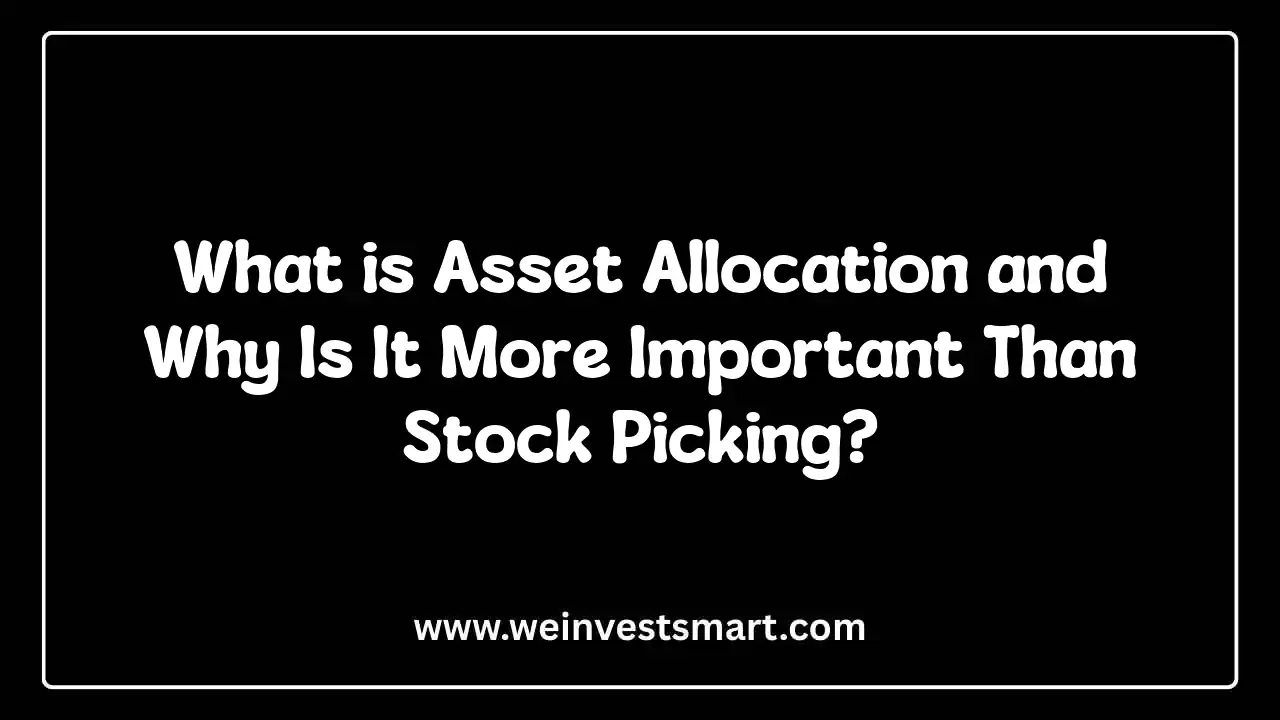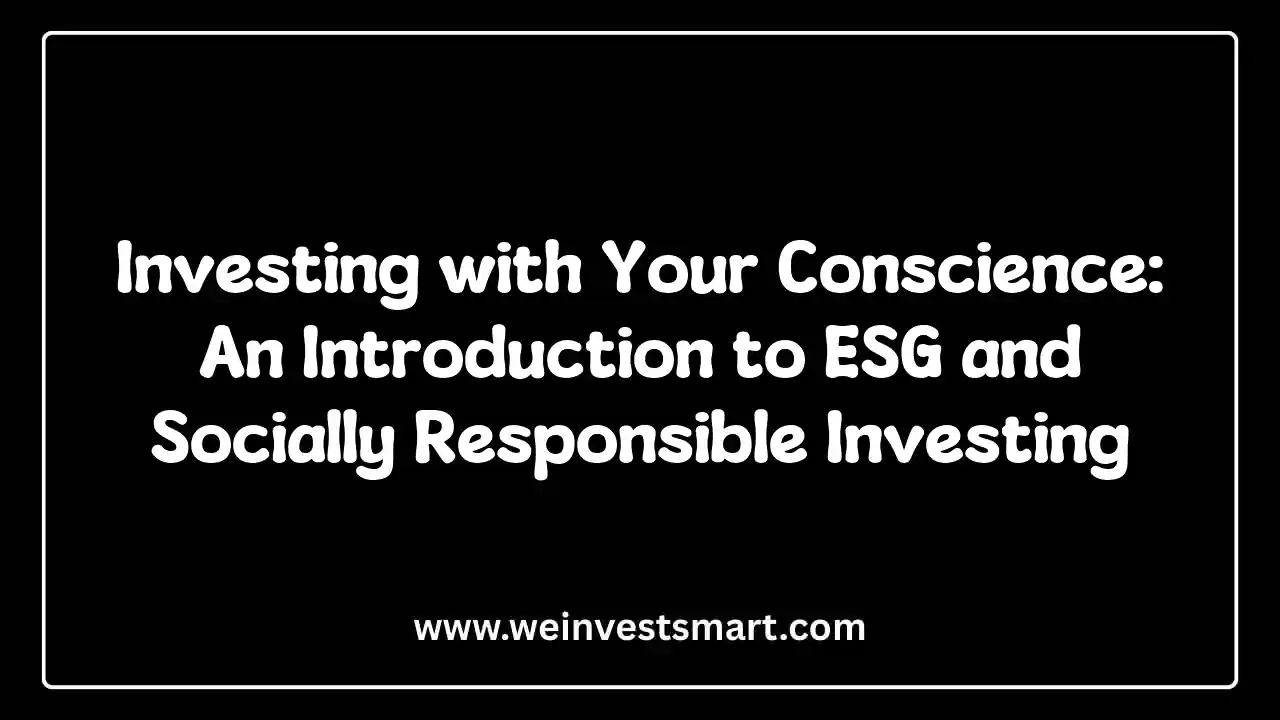· WeInvestSmart Team · investment-strategies · 10 min read
The Psychology of the Market: How to Keep Your Cool When Stocks Tumble
Address the emotional side of investing. Discuss concepts like "loss aversion," "panic selling," and "fear of missing out" (FOMO), and provide actionable strategies for staying disciplined during market volatility.
Most people believe that successful investing is a battle of intellect. They think the person with the highest IQ, the most complex spreadsheet, or the most sophisticated market-timing algorithm will win. But here’s the uncomfortable truth: after you’ve learned the basics, investing is not a battle of wits. It is a battle of wills. It is a game of psychological endurance, and your biggest opponent is not the market; it is the person staring back at you in the mirror. Going straight to the point, the biggest destroyer of long-term wealth is not a bad economy or a poor stock pick; it is a handful of powerful, predictable, and deeply human emotional biases.
We live in a world that is wired to trigger these biases. Financial news channels flash screaming red headlines during a downturn. Social media bombards us with stories of overnight crypto millionaires. We are constantly prodded by the two most powerful emotions in finance: fear and greed.
But what if we told you that the stock market is not the source of your risk? What if the real risk is your reaction to the stock market? Here’s where things get interesting. The field of behavioral finance has proven that we are all running on ancient, buggy software. Our brains, which evolved to survive immediate, physical threats on the savanna, are spectacularly ill-equipped to handle the abstract, statistical threats of modern financial markets. And this is just a very long way of saying that to win the game of investing, you must first understand the flawed psychology of the player: you.
The Foundation: Why Your Brain is Hardwired for Bad Investing Decisions
Before we can build a defense, we must understand the enemy. There are dozens of cognitive biases, but a few key culprits are responsible for the vast majority of investing mistakes.
1. Loss Aversion: The Pain of Losing is Twice as Powerful as the Pleasure of Gaining
This is the big one. It’s the king of all behavioral biases. Going straight to the point, loss aversion is a cognitive principle identified by Nobel laureates Daniel Kahneman and Amos Tversky. Their research demonstrated that for the human brain, the psychological pain of losing a dollar is roughly twice as powerful as the pleasure of gaining a dollar.
Think of it this way:
- Finding a $100 bill on the street feels good.
- Losing a $100 bill feels catastrophic.
Here’s where things get interesting in an investing context. When the market is rising, your portfolio gains feel nice. But when the market falls 10%, the psychological impact on your brain is equivalent to a 20% gain. This asymmetry is why market downturns feel so terrifying and visceral. Your brain’s ancient threat-detection system lights up, screaming, “Danger! The numbers are going down! We are losing resources! We must make the pain stop!”
This single bias is the root cause of the most destructive investor behavior of all: panic selling.
2. Panic Selling: The Ultimate “Buy High, Sell Low” Strategy
The feeling of loss aversion creates an almost unbearable urge to “do something” to stop the pain. The most obvious “something” is to sell your investments. “I’ll just sell now,” your brain says, “and get back in when things calm down.”
But what do we do with this impulse? We must recognize it as the single most effective way to destroy our own wealth.
- The Action: You sell your diversified portfolio of high-quality assets after they have already fallen in value, locking in a permanent loss.
- The Inevitable Result: You then sit on the sidelines in cash, too scared to get back in. The market, as it always has, eventually recovers. But because you are paralyzed by fear, you miss the powerful rebound. You only feel “safe” enough to get back in after the market has already reached new highs, effectively forcing yourself to buy back in at a higher price than where you sold.
You may also be interested in: Lump Sum vs. Dollar-Cost Averaging: What Does the Data Say?
And this is just a very long way of saying that panic selling is a perfect, self-inflicted strategy for buying high and selling low. It is the polar opposite of every sound investment principle.
3. Fear of Missing Out (FOMO): The Siren Song of Greed
The flip side of the fear coin is greed, and its modern name is FOMO (Fear of Missing Out). This bias is triggered when we see others making a lot of money, quickly.
Going straight to the point, FOMO is an emotional response to the perception that you are missing out on a profitable opportunity. It’s the feeling you get when your cousin tells you about the “meme stock” that tripled his money in a week, or when a cryptocurrency is soaring and every headline declares a new paradigm.
The funny thing is that our brains are social creatures. We are wired to follow the herd. When the herd is stampeding toward a “hot” investment, the urge to join them is almost irresistible. This leads to classic bubble behavior:
- You abandon your sound, long-term, diversified strategy.
- You pile into a speculative asset at or near the peak of its hype cycle, paying a dangerously high price.
- When the bubble inevitably pops, you are left holding the bag.
FOMO, just like panic selling, is a perfect recipe for buying high and selling low. It’s a greed-driven mistake, whereas panic selling is a fear-driven one. They are two heads of the same emotional dragon.
You may also be interested in: Stocks, Bonds, and Index Funds: A Simple Explanation for the Absolute Beginner
The Antidote: Actionable Strategies to “De-Bug” Your Brain and Stay Disciplined
Okay, so we know our brains are flawed. How do we fight back? We can’t change our evolutionary wiring, but we can create systems and mental models that act as a firewall against our worst impulses.
Strategy #1: Have a Written Investment Plan
This is your single most important defense. Going straight to the point, an Investment Policy Statement (IPS) is a simple, written document that outlines your financial goals, your time horizon, your risk tolerance, and your strategy before you are in the middle of a crisis.
Think of it as a pre-nuptial agreement with yourself. You write the rules of the relationship when you are calm, rational, and in love with your long-term plan. Then, when the inevitable fight (a market crash) happens, you are bound by the clear-headed rules you already set.
Your plan should include:
- Your “Why”: “I am investing for financial independence in 25 years.”
- Your Asset Allocation: “My target is 80% stocks and 20% bonds.”
- Your Rebalancing Rule: “I will rebalance my portfolio back to my target allocation once a year.”
- Your Crisis Protocol: “During a market downturn of 20% or more, I will not sell anything. I will continue my automatic contributions as planned. I will not check my portfolio balance more than once a month.”
This document is your shield. When you feel the panic rising, you don’t consult your emotions; you consult the plan.
Strategy #2: Automate Everything - The Ultimate Discipline Hack
Here’s where things get interesting. The best way to defeat your emotional brain is to remove it from the decision-making process as much as possible. Financial automation is your secret weapon.
- The Action: Set up automatic, recurring investments from your checking account into your retirement and brokerage accounts every single payday.
- The Result: You have created a system that automatically forces you to engage in the most profitable investor behavior: dollar-cost averaging. You are consistently buying, whether the market is high or low. When the market is down, your fixed dollar amount automatically buys more shares, and when it’s high, it buys fewer shares.
This sounds like a trade-off, because you’re giving up control, but it’s actually a desirable thing. We covet this system because it turns market volatility from an enemy into an ally. You are systematically buying assets “on sale” during downturns without having to summon any courage or fight any fear.
Strategy #3: Zoom Out - Reframe Volatility as Opportunity
Your brain sees a sharp drop in your portfolio value as a loss. You need to train it to see it as a discount.
Going straight to the point, market corrections and crashes are a normal, recurring feature of investing. They are not a sign that the system is broken; they are the source of the long-term returns we seek. The stock market has an upward bias over the long run, but the path is not a straight line.
Here’s a powerful mental model:
- Imagine your favorite store is having a 30% off sale on everything. Would you panic and run out of the store, vowing never to shop there again? Of course not. You would rush in and buy as much as you could.
- A stock market crash is simply a sale on high-quality financial assets. It’s an opportunity for long-term investors to buy shares at a discount.
When you feel fear, pull up a 100-year chart of the S&P 500. You will see wars, pandemics, recessions, and crashes. And you will see that every single one of them was eventually followed by a recovery and a new all-time high. This historical perspective is the ultimate antidote to short-term panic.
Strategy #4: Starve Your Fear - The “Media Diet”
Financial news is not designed to inform you; it is designed to addict you. It thrives on sensationalism, panic, and hype because that is what generates clicks and views.
Going straight to the point, during a period of high market volatility, the single best thing you can do for your portfolio is to turn off the financial news. Stop checking your account balance every day. Starve your emotional brain of the constant stream of negative stimuli that is designed to trigger a panic response. You already have a plan. You already have automation. Let the system do its work while you go live your life.
You may also be interested in: Are You Leaving Free Money on the Table? A Deep Dive into Your 401(k) Company Match
The Bottom Line: Your Behavior is the Final Variable
The formula for long-term investment success is surprisingly simple: (Your Savings Rate + Your Time in the Market) - (Fees + Your Emotional Mistakes) = Your Financial Outcome
You can’t control the market. You can’t predict the future. But you have absolute, 100% control over your own savings rate, your own asset allocation, the fees you pay, and, most importantly, your own behavior.
You may also be interested in: How to Build a Dividend Portfolio for Passive Income: A Step-by-Step Guide
And this is just a very long way of saying that successful investing is a behavioral game, not an analytical one. By understanding your own psychological weaknesses—your innate susceptibility to loss aversion, panic selling, and FOMO—and by building a disciplined, automated system to protect you from yourself, you can turn your greatest liability into your greatest asset.
Psychology of the Market FAQ
What is behavioral finance?
Behavioral finance is the study of how psychological factors influence financial decisions. It explains why investors often make irrational choices based on emotions rather than logic.
What is loss aversion?
Loss aversion is the tendency to feel losses more strongly than gains. Investors often sell assets during market downturns to avoid further losses, leading to poor long-term results.
What is FOMO in investing?
FOMO (Fear of Missing Out) is the fear of missing profitable opportunities. It leads investors to buy assets at peak prices during market hype, often resulting in buying high and selling low.
How can I overcome emotional investing?
To overcome emotional investing, create a written investment plan, automate contributions, diversify your portfolio, avoid checking balances daily, and focus on long-term goals rather than short-term fluctuations.
Why is market timing dangerous?
Market timing is dangerous because it’s extremely difficult to predict market movements consistently. Attempting to time the market often leads to missing out on rebounds and reduces overall returns.
This article is for educational purposes only and should not be considered personalized financial advice. Consider consulting with a financial advisor for guidance specific to your situation.



